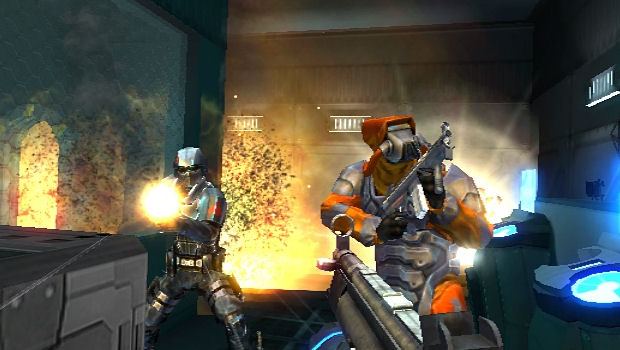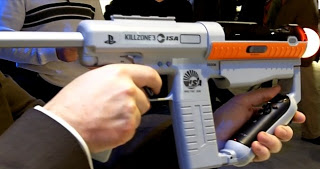This post has not been edited by the GamesBeat staff. Opinions by GamesBeat community writers do not necessarily reflect those of the staff.
As is the case with many of the other games I think about nowadays, Conduit 2 interests me not because of how it works, but because of how it doesn’t. Apart from its stale and unambitious design decisions — which I’ll admit, wouldn’t make for a good article at all — it suffers from many of the same problem as other shooters on the Wii. It simply doesn’t feel right.
This isn’t much of a surprise. To date, no developer has cracked the formula that will get first- and third-person shooters working well with the Wii Remote or the PlayStation Move. Conduit developer High Voltage doesn’t seem to have brought any new thinking to the table in this regard. Infinitely customizable control schemes are all well and good, but I hardly think throwing the problem into consumers hands is a valid solution.
Perhaps, though, I’m getting ahead of myself. What exactly is the problem with wand-shaped controllers?
The idea of a resting position presents the first quandary. If you’re using a traditional dual-analog control scheme and don't have need to aim, you simply take your thumb off the right analog stick. Through the magic of modern technology, you’ll find that the stick returns to its resting position, and you no longer need to worry about your current view until you feel the need to change it. With a wand, you need to make a conscious effort to keep your cursor centered, which over anything other than the shortest of periods is tiring. If you lose concentration for even a fraction of a second, you’ll find your view drifting as the cursor reaches the edge of the screen.
The second main problem stems from the way you usually target enemies in a shooter. Analog sticks control both the camera and the targeting reticule at exactly the same time; you never need to worry about one or the other too much. Simply get an enemy in the center of the screen and fire away. With a pointer, you have to frame the enemy within the boarders of the screen before you can aim at them individually. This is why shooters on the Wii can often feel so inaccurate and sluggish.

To my mind, the only title that manages to solve this problem is Resident Evil 4: Wii Edition. It’s odd that this should be the case because Capcom didn't design RE4 for the Wii, but at any rate, the game’s existing design happened to fit in exactly with how the controller works best.
Resident Evil 4 works for two reasons. For starters, it only uses the pointer for aiming — never for camera movement. This gets around the problem of a resting position. When you’re not aiming, the cursor doesn’t change the camera’s orientation at all.
In addition, it allows the player to use the analog stick to frame enemies and the pointer to aim at them. This separation of function works brilliantly because you don't have to worry about doing everything with the Wii Remote. In the case of motion-controlled shooting, many hands make light work.
Unfortunately, many developers can't use Resident Evil 4’s exact control scheme for their own games. Capcom’s seminal survival-horror title is a unique beast — a prototype for games like Gears of War — and it controls unlike most other entries into its genre. Its tank-like controls are the antithesis of a run-and-gun shooter, and its solutions for the inherent problems with the Wii Remote would never transfer over to a faster-paced experience. In a more frantic game, the developer couldn't use the Nunchuk to control both the camera and the character.
What we can take from RE4 is a lesson: In order to get a new controller to work in an established genre, we need to make some minor — but fundamental — changes to the games. The usual mix of adjustable dead zones and sensitivity settings aren't going to cut it. Halo, the game many feel was the first FPS to work with a controller, didn’t succeed simply because of its refinement of control; it succeeded because it was a game whose design diverged significantly from that of most mouse-and-keyboard shooters. It was a much slower game that relied more on tactical play than the sharp reflexes needed for Quake, Counter-Strike, or Unreal Tournament.
It’s not yet clear how — or even if — a traditional shooter can ever feel completely natural with a wand. What is obvious, however, is that the Conduit series is not blazing a trail anyone should follow. Rather than shoehorning new controls into an existing genre, developers should think about how they can change the makeup of the genre itself. Doing so may even move the entire genre into exciting and uncharted territory.


